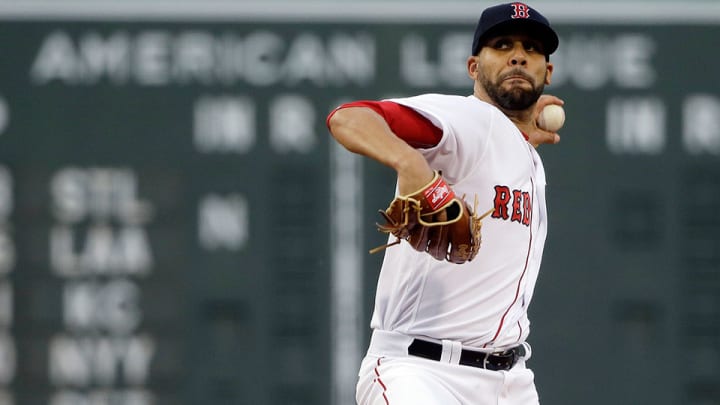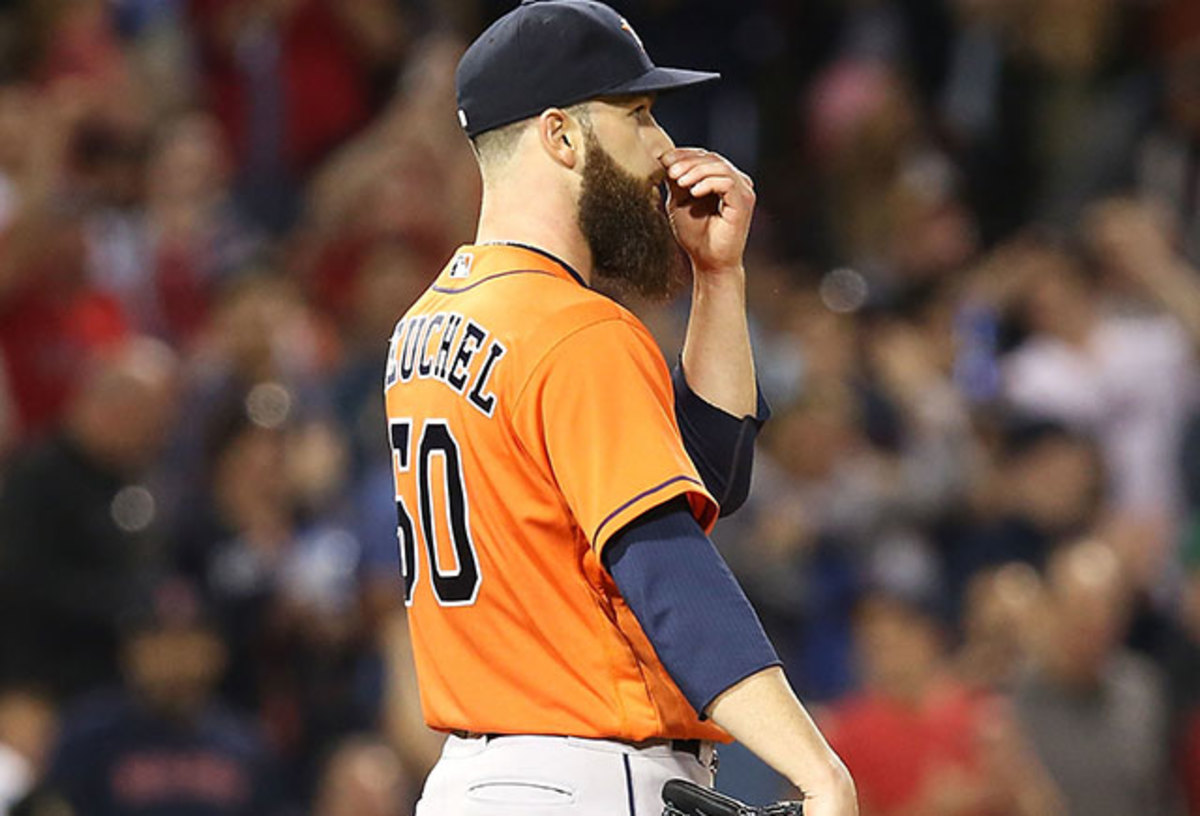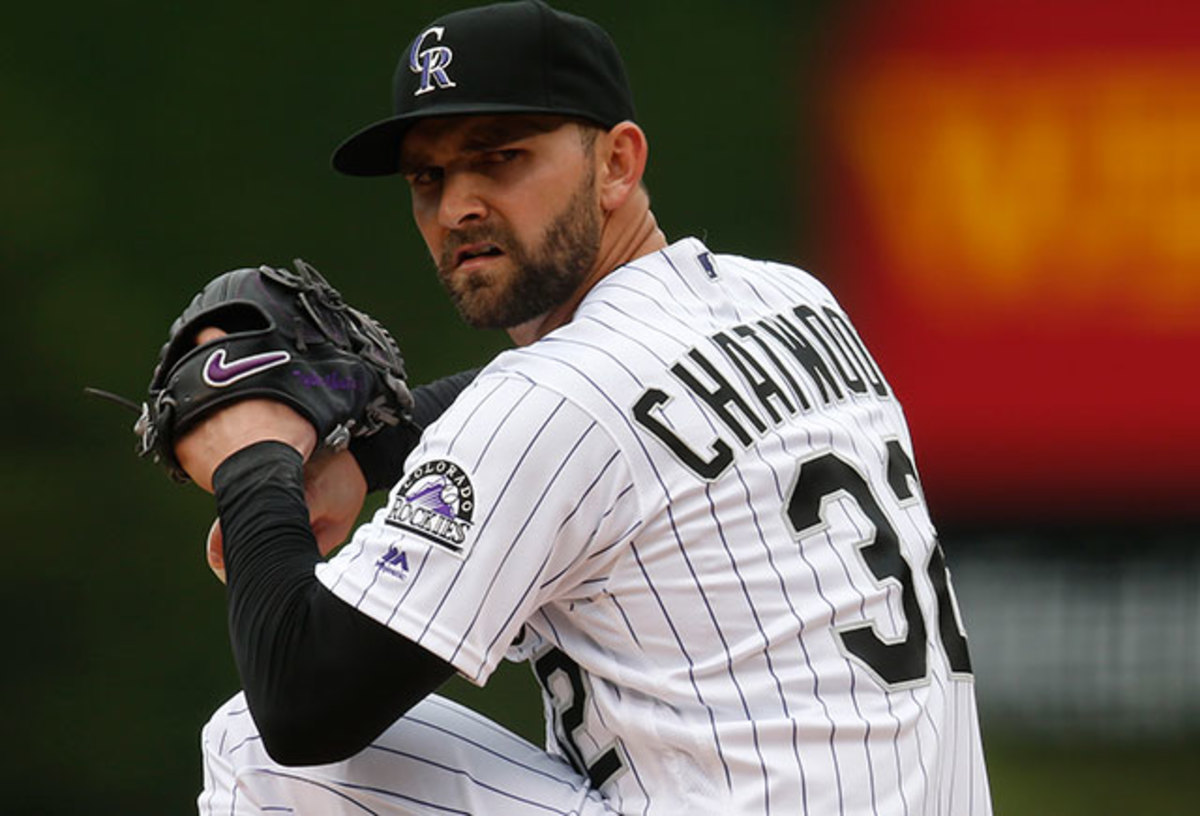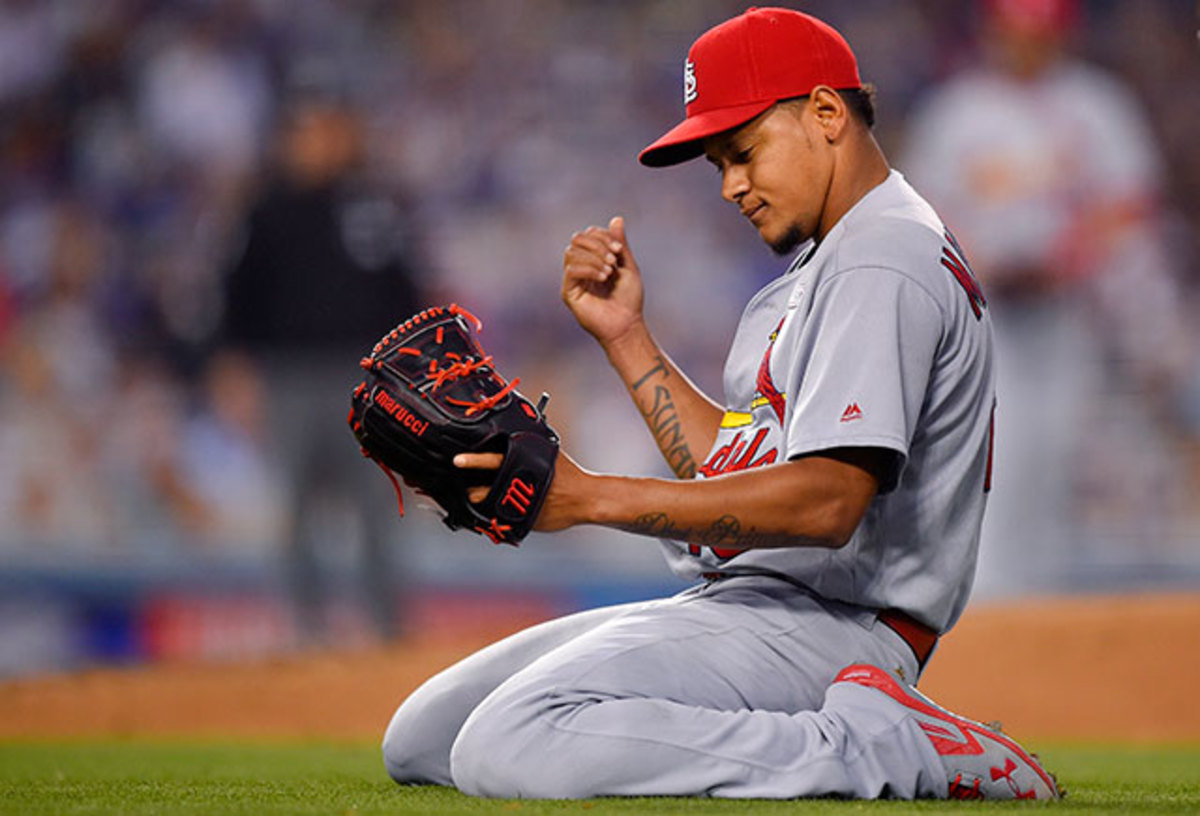The 30: What's luck got to do with this week's MLB power rankings?

“You are what your record says you are.” That old Bill Parcells quote is meant to be a pragmatic way to understand sports. Seasons are made, jobs are decided and fans are either rewarded or let down by a team’s wins and losses. Parcells’s quote doesn’t tell the whole story, though. The baseball season is incredibly long, and even with a solid six weeks in the books, a team’s record might not accurately reflect its ability or its upside. Luckily, the analytical world offers us multiple metrics to identify that kind of disconnect.
This week’s four featured teams—the Astros, Rockies, Cardinals and Red Sox—all sport underlying numbers that suggest they should have won more games than they have. We’ll dig into those discrepancies and other factors which point to potentially better tidings ahead.
Mind the gap. It’s Week 6 of The 30.
Best Freakish Event You Won't Probably See Again For 100 Years: Jose Ramirez
On Monday night, Indians infielder Jose Ramirez did something you rarely see, even in the wacky world of baseball: He seemed to defy the laws of physics. Sprinting to second base as he tried to stretch a single into a double, Ramirez’s helmet came flying off, landing first on his left foot, then on this right. The angle of Ramirez’s foot launched the helmet high in the air and apparently backwards. Imagine his surprise, then, when the helmet completed its journey through the stratosphere … only to land right on his back as he arrived at second.
You know something truly bizarre has happened when Wired decides to write about it. It’s some next-level nerdiness, befitting a play I’ll still be watching in confusion and awe 10 years from now.

The Pen Is Not Mightier
A bullpen prone to meltdowns in big spots, plus ugly starts for Dallas Keuchel and Carlos Gomez, have scuttled the Astros’ first six weeks.
30. Atlanta Braves (9–27 record, minus-64 run differential, last week: 30)
29. Minnesota Twins (10–26, minus-57, LW: 29)
28. Cincinnati Reds (15–22, minus-50, LW: 28)
27. Milwaukee Brewers (16–22, minus-38, LW: 26)
26. Oakland A’s (16–22, minus-51, LW: 21)
25. Houston Astros (15–24, minus-26, LW: 24)
24. San Diego Padres (17–22, minus-22, LW: 27)
23. Arizona Diamondbacks (17–23, minus-19, LW: 22)
22. Los Angeles Angels (16–21, minus-23, LW: 25)
The 2015 Astros went 21–29 in one-run games, the third-worst mark in the American League. That’s how a team that scored an impressive 111 more runs than it allowed ended up barely getting into the playoffs—albeit with an 86–76 record, seven fewer wins than you’d expect from a squad with that strong a run differential.
Bautista, Odor at fault in brawl, but MLB culture bears blame too
Saturday’s loss to the Red Sox
Feliz foolishly challenged him instead, firing a pitch that caught way too much of the plate. Ortiz crushed it for a game-winning double. That dropped Houston's record to 1–3 in extra-inning games. It also lowered the Astros’ record in one-run games to 4–6, tied for the third-worst mark in the AL. Problem is, this year’s Astros have been much worse in other areas than last year’s edition. So instead of those lousy results in close contests being a minor annoyance, Houston sits dead-last in its division.
The problems start with Dallas Keuchel. Last year’s Cy Young winner has seen his ERA balloon by more than three full runs, is walking twice as many batters as he did last year and is falling victim to big innings thanks to a plunging strand rate. Each attempt at a breakthrough has ended poorly, too. Keuchel followed eight innings of shutout ball over Detroit on April 15 with a six-run, 13-hit disaster against the Rangers, then followed seven innings of two-run, eight-strikeout excellence on May 7 against Seattle with an eight-run, 10-hit meltdown versus the Red Sox. His issues are manifold, and not easily fixed: Keuchel isn’t throwing as hard, he's getting fewer strike calls on the black and he's failing to get batters to swing at as many pitcher’s pitches the way they did against him last season.
Carlos Gomez has been just as disappointing. A splashy acquisition at last year’s trade deadline, he’s batting a horrific .182/.238/.248 this season, making him the worst everyday hitter in the AL. Pick your favorite indicator, and Gomez has grown worse in that category this year: He’s hitting fewer line drives, making hard contact less often, pulling the ball less often and hitting more ground balls this year than he has in multiple seasons.
Perhaps most frustratingly, while the bullpen has performed better this year than it did in 2015 by categories such as strikeout-to-walk rate, it’s also dug itself some big holes in key situations. In 2016 high-leverage situations, opposing hitters have performed better against Astros relievers than they have against all but eight other teams’ bullpens. Considering the king’s ransom Houston gave up to acquire hard-throwing righty Ken Giles to try to bolster its 'pen, that’s…
By run differential, the Astros should have two more wins than they do so far this season. By Cluster Luck (Ed Feng’s metric that examines how often teams cluster hits together on offense and scatter them while pitching), Houston ranks a lowly 24th.
The Astros’ slow start doesn’t look quite so bad when you consider that they had not one but two similarly bad stretches last season, yet went on to make the playoffs. Still, if Houston wants to make another postseason run, getting its staff ace and talented centerfielder to start producing would help a lot. Pitching around David Ortiz next time might be a good idea, too.

Home Sour Home
The streaking Rockies are climbing in the NL West, but their pitchers’ home woes have stunted further growth.
21. Detroit Tigers (16–21, minus-19, LW: 20)
20. New York Yankees (16–20, minus-22, LW: 23)
19. Tampa Bay Rays (16–19, minus-7, LW: 18)
18. Kansas City Royals (18–19, minus-18, LW: 15)
17. Colorado Rockies (19–18, plus-0, LW: 19)
16. Miami Marlins (20–17, minus-1, LW: 17)
15. Philadelphia Phillies (22–16, minus-30, LW: 16)
When you’re a team that has finished last or second-to-last in your division in each of the past five years and averaged a not-so-nice 69 wins a season, any signs of progress are exciting. The Rockies just swept the Mets, one of the most talented teams in the league, at Coors Field and now sit a game above .500, just a half-game out of second place in the NL West and 1 1/2 games out of first. This is cause for celebration.
Still, Rockies fans who’ve witnessed Nolan Arenado growing into an MVP candidate, Trevor Story’s out-of-nowhere monstrous rookie season (this Denver resident salutes you, Ben Reiter, for recognizing Cherry Cricket) and other exciting tidings have to wonder: What if Colorado’s pitchers didn’t go from Cy Young candidates on the road to bona fide arsonists at home?
Classifying the Rockies’ staff that way isn’t exaggerating. Even after sweeping three at home from the potent Mets (allowing just nine runs all series), the team’s home ERA sits at 6.55 with an 8–10 record. Even by mile-high standards, that’s a ludicrously bad number: The 2015 Rockies posted a 5.68 ERA at home, and the 2014 club that finished a brutal 66–96 put up a relatively lovely 5.05 mark at home.
Ortiz's effort vs. Astros could stand as signature performance of season
From day one of franchise history, it’s been no secret that playing at elevation causes baseballs to fly long distances. Coors Field is no exception in that regard, enhancing home-run hitting by 29% so far this year. But here’s the thing: That number’s actually down quite a bit from the park’s Blake Street Bombers heyday. Multiple Rockies front-office regimes have taken steps to suppress homers at Coors, using methods ranging from storing baseballs in a humidor to dampen their flight to raising the height of the outfield walls to establishing deeper dimensions than in any other park—347 feet at the leftfield foul pole, 390 to left-center, 415 to straightaway center, 375 to right-center and 350 at the right-field foul pole. With so much space to cover and with the widely-held belief that breaking balls stay flatter (and become more hittable) in the dry, thin air, the end result isn’t so much an avalanche of homers as it is a never-ending stream of hits loaded with marathon innings, one single-double-single-triple-double-double-single-single-double frame after the next.
Giving up nearly twice as many homers at home this year as Rockies pitchers have on the road is a problem, of course. But the bigger issue is that opponents are batting .307 with a .364 on-base percentage at Coors. Compare that to a .236 average with a .294 on-base percentage, an excellent 3.38 ERA and an 11–8 record away from Colorado.
Every brain trust in franchise history has tried to spitballideas on how to deal with Coors, with only fleeting success in 1995, 2007 and ‘09 to show for it. While statheads do adjust for park factors when evaluating run prevention, carrying an ERA more than three runs higher at home than on the road goes well beyond the pale. There’s probably no simple explanation here, either. Scan this year’s schedule for home/road opponent anomalies, and you’re just left scratching your head as to how a team could give up 32 runs in a three-game series against the normally listless Padres at home, then go to Wrigley two series later and take two out of three from the mighty Cubs, allowing just nine runs all series.
So while general manager Jeff Bridich and his staff work on a new, more analytical approach to solving such problems, those flocking to 20th and Blake every night can’t do much more than hope. Hope that maybe the biggest home/road split in franchise history is just a fluke born of small(ish) sample size. Hope that a defense that features two Gold Glove-caliber defenders in Arenado and D.J. LeMahieu, as well as an impressive defensive start for Story, can cut off a bunch more would-be runs as the season goes on. Hope that the Rockies won’t remain the fifth-most-snakebit team in baseball by Cluster Luck, with especially horrific results trying to pitch out of trouble. Hope that young righthanders Chad Bettis, Jon Gray and Eddie Butler can carry some of their recent impressive showings on the road over to Coors Field, the way Tyler Chatwood did with his seven strong innings in Sunday’s win over the Mets. But even if the Rockies can’t solve the same dilemma that’s held them back for most of the past 23 years, maybe they can come close to respectability at home, keep shutting teams down on the road and still be in the middle of NL West contender talk four months from now.

Where Have You Gone, Allen Craig?
The team that fared best in clutch situations for years suddenly finds itself struggling in big spots.
14. Cleveland Indians (17–17, plus-8, LW: 11)
13. Toronto Blue Jays (19–20, plus-19, LW: 14)
12. Pittsburgh Pirates (19–17, minus-2, LW: 8)
11. St. Louis Cardinals (20–18, plus-49, LW: 10)
10. Los Angeles Dodgers (20–18, plus-20, LW: 12)
9. San Francisco Giants (22–18, plus-3, LW: 13)
8. Seattle Mariners (21–16, plus-26, LW: 5)
7. Texas Rangers (22–16, plus-11, LW: 9)
No matter how many advanced stats get cited on game broadcasts, no matter how many Ivy Leaguers flow into major league front offices, no matter much we might swoon at Brad Pitt playing Billy Beane in Moneyball, there will always exist some tension between baseball’s old-school and new-school ideas. Even as the differences start to fade away and most people in the game recognize that both beer and tacos are delicious, language will remain one of the last dividing walls.
One of the most polarizing words in the baseball lexicon is “clutch.” When a batter produces a big hit with the game on the line, or when a pitcher strikes out a batter to win a game, we describe it as a clutch performance. From there, it’s no big leap to ascribe clutch abilities to that batter or pitcher and to assume that he’ll keep producing positive results in the biggest moments. Going one step further, occasionally a team will string together a series of positive results in big spots, thus earning a reputation as a one-through-25 collection of clutch heroes.
With Jose Reyes suspension, MLB making strides in right direction
For several years, the Cardinals were the gold standard in clutch reputations, and in some ways, that was justified. St. Louis went on a multi-year run in which its offense was unstoppable with runners in scoring position. Those efforts were led by Allen Craig, who had what might have been the best sustained run of clutch hitting by any player in major league history. The 2015 Cardinals followed that anomalous performance by becoming clutch pitching gods, holding opponents to a microscopic .210 batting average with runners in scoring position—by far the best result in all of baseball, and 36 points below the team’s overall batting average allowed mark.
That kind of sustained run of excellence in big spots is, mathematically speaking, hugely unlikely. Numerous studies have shown that, except for spectacularly rare instances, if you take sample sizes of multiple seasons, there’s no such thing as a clutch hitter or clutch pitcher, and thus no such thing as a clutch team. The Cardinals’ apparent ability to overcome those very long odds prompted Baseball Twitter to coined a term for this occurrence: #CardinalsDevilMagic.
This season, the voodoo has worn off. Cardinals hitters are still faring moderately better with runners in scoring position than they have the rest of the time. But on the pitching side, the opposite has happened. St. Louis pitchers have allowed an OPS more than 100 points higher with runners in scoring position than they have with the bases empty. If we examine this trend through the prism of Cluster Luck, we find that the Cards have fared worse at preventing teams from staging big rallies than any other team in baseball.
So what’s going to happen from here? That’s tough to say. St. Louis owns the third-best run differential in baseball, with runs scored and runs allowed totals that suggest a team that should be 24–14, not 20–18. On talent and results, this is a team that as currently constituted should have a strong chance to make the playoffs for the sixth straight season—no mean feat in today’s parity-ridden game. But just as the Cardinals kept beating the odds with clutch outcomes for several years, it’s possible that this year’s squad never sees positive regression toward the mean.
Call it a change in luck, or the end of clutch, depending on your attribution. Either way, it’s a reminder that baseball isn’t always fair, and that weird things can happen—sometimes even over 162 games or more.
The Price Is Right
The best team in the AL could get even better once its ace catches a few breaks.
6. New York Mets (21–16, plus-34, LW: 3)
5. Washington Nationals (23–15, plus-36, LW: 4)
4. Baltimore Orioles (23–13, plus-37, LW: 7)
3. Chicago White Sox (24–14, plus-38, LW: 2)
2. Boston Red Sox (24–14, plus-59, LW: 6)
1. Chicago Cubs (27–9, plus-109, LW: 1)
Here’s a useful rule for evaluating a baseball player: Unless he’s hurt, whatever seemingly horrible problems might be plaguing him will probably blow over. Very rarely do good players suddenly collapse, barring injury.
This is why Red Sox fans had nothing to fear when it came to David Price’s slow start. Granted, through his first seven starts with Boston, Price had a 6.75 ERA, an abysmal result that made him one of the most generous pitchers in the game and nothing close to the $217 million ace the team envisioned. But plenty of signs pointed to Price being fine. In those seven starts, he’d tossed 41 1/3 innings, punching out an incredible 53 batters—by far the gaudiest strikeout rate of his career. His home-run rate was right in line with his career mark. While his walk rate stood at its highest point in six seasons, it wasn’t abnormally high by league standards.
Matt Bush makes MLB debut after painful, remorseful 12-year odyssey
So what was the problem? Price was pitching horrendously with runners on base, stranding a smaller percentage of the runners he put on than any other AL starter. At worst, you could argue that this was a mechanical issue. As Evan Drellich’s Boston Herald piece last weekend explained, Price was having trouble getting enough leg lift in his delivery, which was making him struggle more than he’d like, particularly when pitching from the stretch. Solve that problem, and everything could come together in a hurry.
That’s exactly what happened in his very next start. Facing the Astros on Thursday, Price fired 6 2/3 dominant innings, striking out 12 batters and walking just one. Through a combination of better mechanics and improved luck, the six hits allowed added up to just one run. If there were injury concern, that too has been quelled: After averaging 92–93 mph on his fastball through those first seven starts, Price sat at 94 against Houston, touching 96.
Expect Price to reassume his title as one of the league’s best pitchers in short order. With Rick Porcello finally starting to earn some of the gobs of money the Red Sox threw at him and knuckleballer Steven Wright emerging as one of the most successful pitchers in the league, the rotation looks vastly improved compared to last year’s debacle. Given the dual threat of financial wherewithal and a strong farm system, there are more than enough assets here for Boston to upgrade in-season as needed, too. Add a loaded offense that’s been further supercharged by breakouts for Jackie Bradley Jr. and Travis Shaw, and you have a team that can make good on the rosy AL East-winning predictions made by many in the baseball world.
